Mixing Blue and Green Renders Image Too Yellow
DIY Fields of Greens with Helen Oh
You can make a wide range of greens with just a few pigments. In fact, the fewer colors mixed, the better. Why? The more colors mixed together, the muddier the result. Here we'll look at a few different color combinations that will get you that perfect green. And continue finding the right colors for every painting you create with Color Mixing with Sue Deighton.
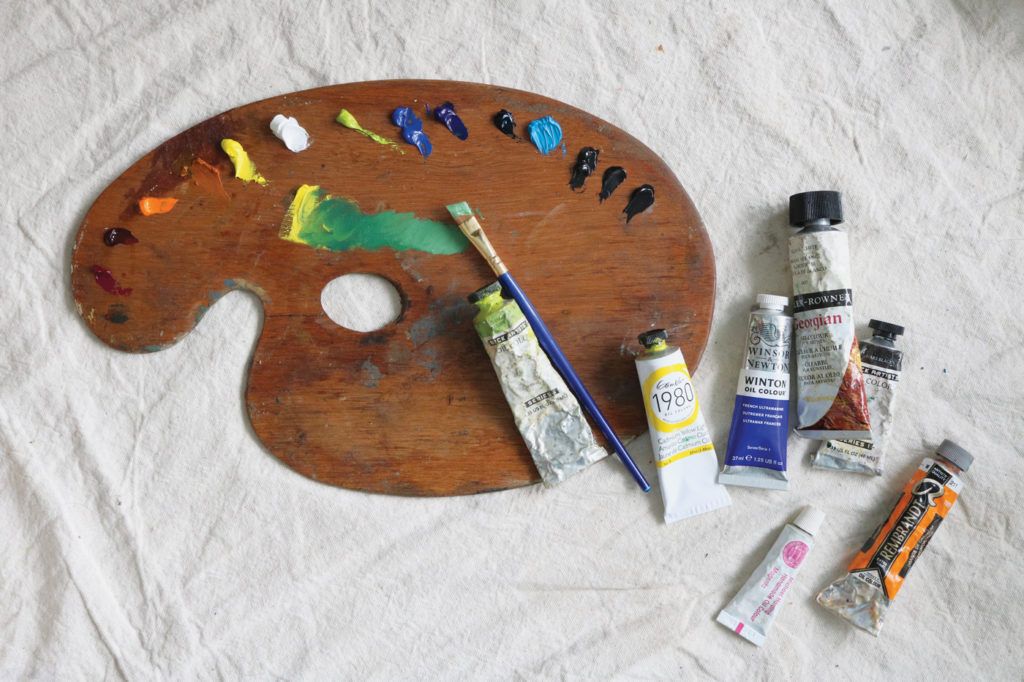
"They'll sell you thousands of greens. Veronese green and emerald green and cadmium green and any sort of green you like; but that particular green, never." — Pablo Picasso
Yellow + Blue
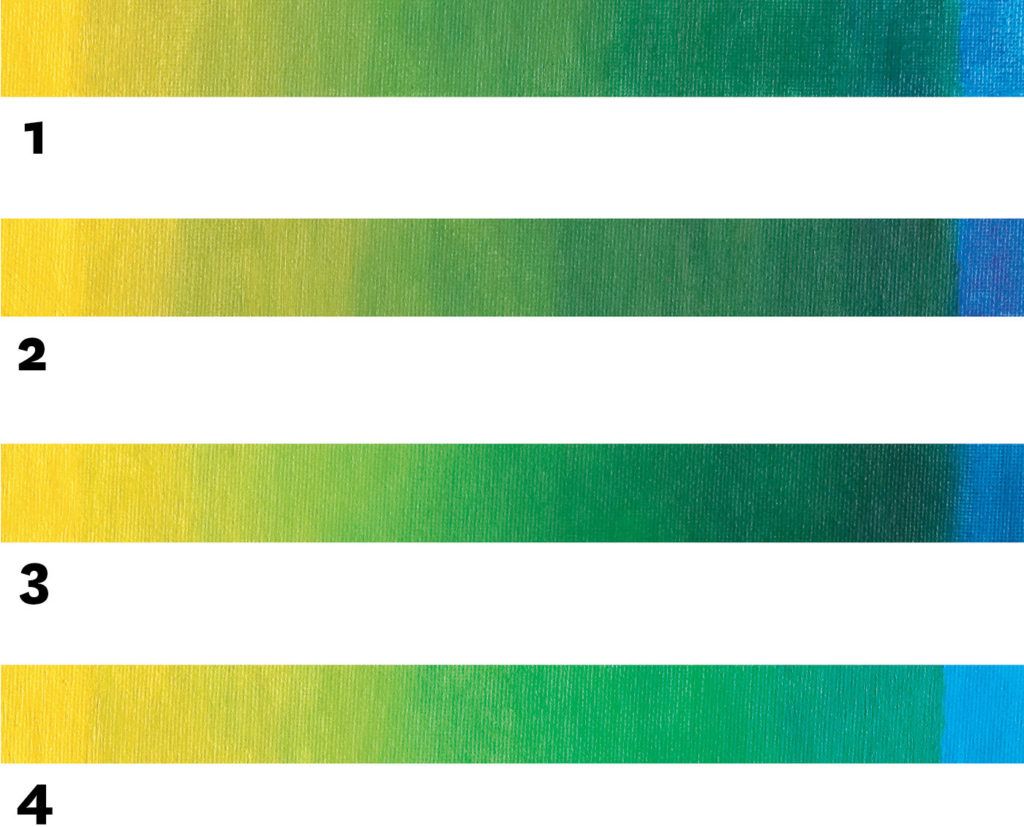
Green, a secondary hue, is a mixture of yellow and blue. The choice of blue affects the resulting green hue. These charts show gradients of greens produced by mixing the same yellow with a small amount of different blues.
1. Cadmium yellow light and cobalt blue: The resulting green resembles permanent green.
2. Cadmium yellow light and ultramarine blue: Ultramarine blue's reddish bias produces a brownish green.
3. Cadmium yellow light and Prussian blue: This deep, inky blue produces a bluish green.
4. Cadmium yellow light and cerulean blue: This bright blue produces a light yellowish green, a substitute for emerald green or Winsor green.
Yellow + Black
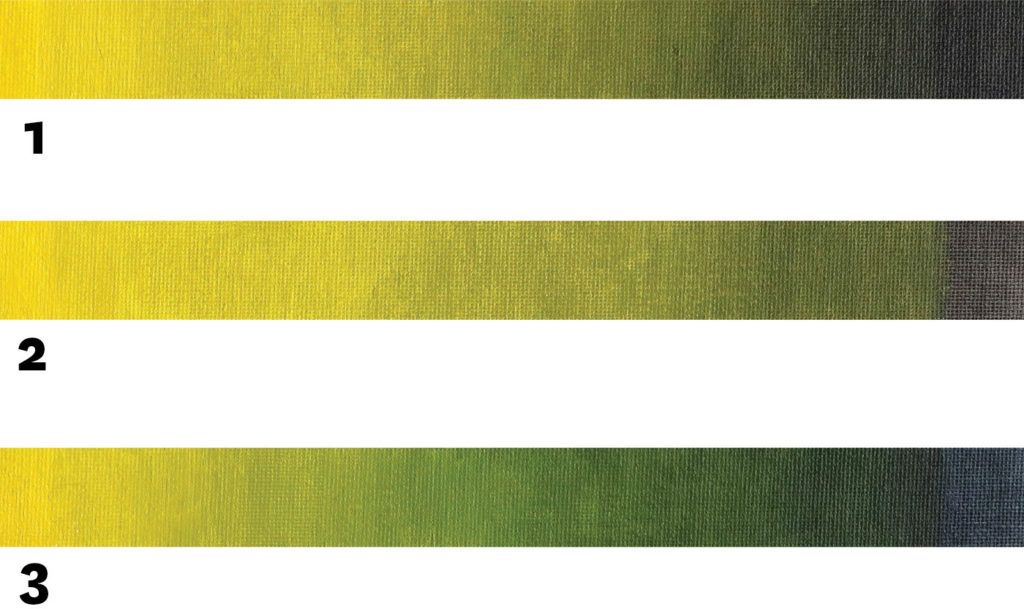
1. Cadmium yellow light and Mars black: Iron oxide black has a high tinting strength and dries quickly. It produces a neutral, opaque green.
2. Cadmium yellow light and ivory black: Ivory, a brownish black, produces a dull yellowish green.
3. Cadmium yellow light and peach black: In The Craftsman's Handbook, Cennino Cennini wrote, "Burnt peach stone is a perfect black." Paul Cézanne was known to favor peach black. This transparent black produces a bluish green.
Neutralizing Greens

Mixing complementary hues neutralizes a color. For subtler greens, try the following:
1. Permanent green and alizarin crimson: This green loses intensity as alizarin crimson is added, producing a dark gray.
Transparent Green
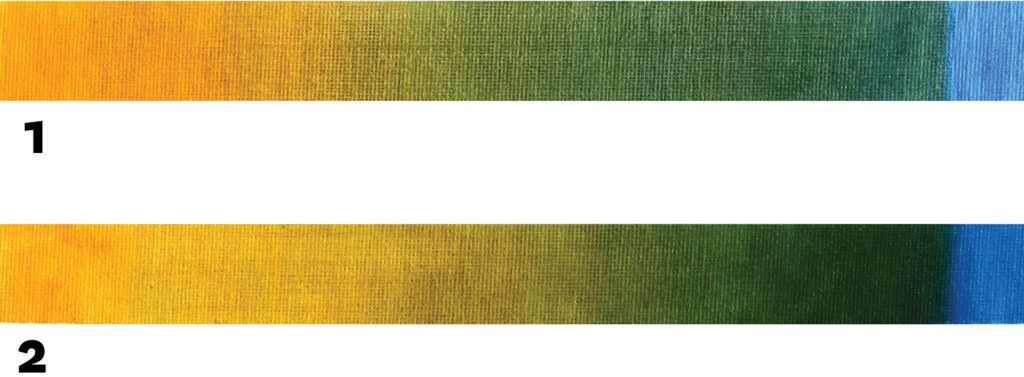
Clear and vibrant Indian yellow is excellent for glazing. Originally derived from the urine of cows fed mango leaves in India, it is now synthetically produced. J.M.W. Turner and Winslow Homer used this exotic color.
1. Indian yellow and cobalt blue: They produce a soft green.
2. Indian yellow and Prussian blue: The mixture is dark, yet luminous.
Layering Greens: Summer Still Life
This layered summer still life provides a range of chromatic and textural approaches. For best results, each application must be dry before applying a new layer. This prevents the mixing of paints, increasing luminosity.

1.Block in the shadows with raw umber

2. Apply opaque local colors. The wire basket is omitted at this stage.

3. Render light passages with chromatic colors. The wire basket is painting in white and Mars black. Finally, add the watermelon patterns and highlights.
1. Artichoke
A. Cadmium yellow light and Mars black B. Cadmium orange and ivory black C. Permanent yellow green and white
2. Lime
A. Permanent yellow green and cobalt B. Raw umber C. Cadmium yellow light
3. Cut Artichoke
A. Cadmium yellow light and white B. Cadmium yellow light and raw umber, magenta and white C. Magenta, cadmium yellow light and white
4. Avocado
A. Permanent yellow green and white B. Cadmium orange and ivory black C. Cadmium orange and white
5. Watermelon
A. Cadmium yellow light and cobalt blue B. Indian yellow and Prussian blue
6. Bottle
A. Permanent yellow green and cobalt B. Indian yellow and peach black C. White and Mars black
Love this quartet of greens?
Don't stop here! Find all the right colors you need with Color Mixing with Sue Deighton! This lesson on painting with greens first appeared in Artists Magazine.
Source: https://www.artistsnetwork.com/art-techniques/color-mixing/color-combinations-mixing-greens/
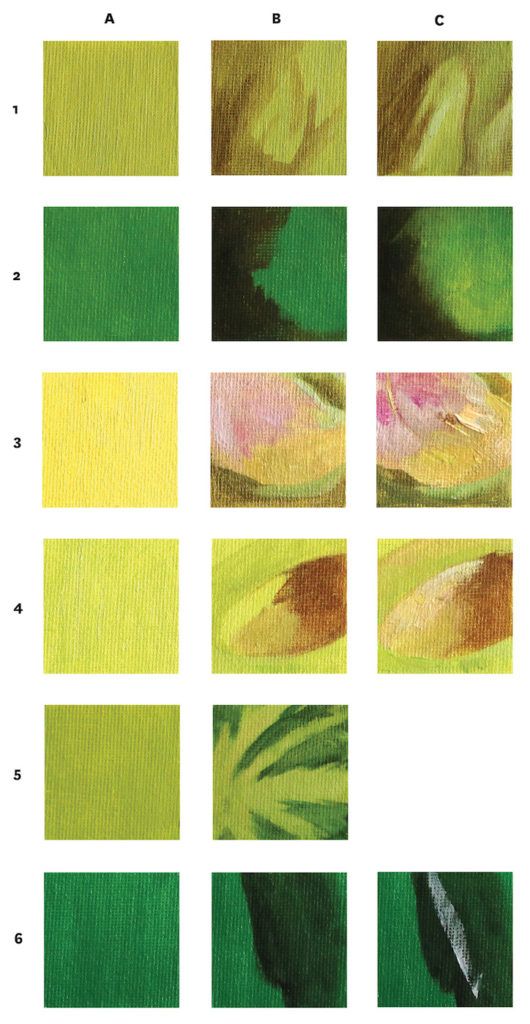
0 Response to "Mixing Blue and Green Renders Image Too Yellow"
Post a Comment